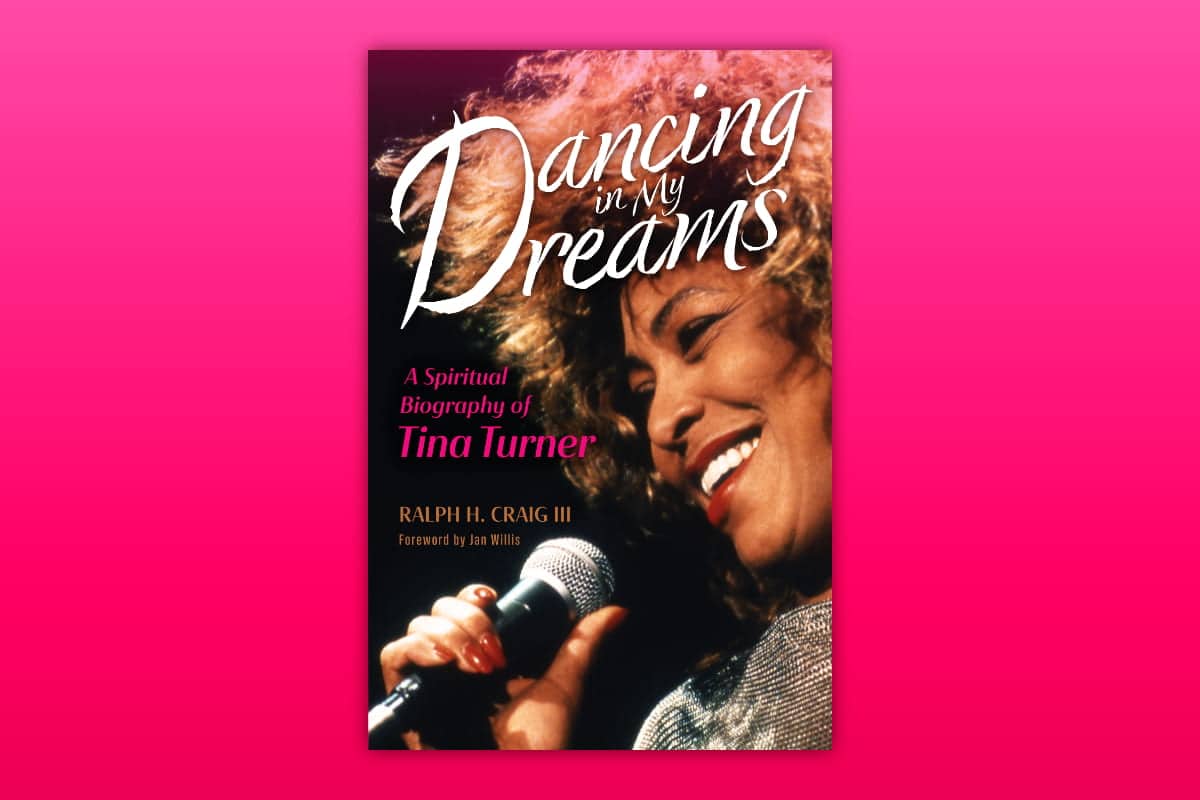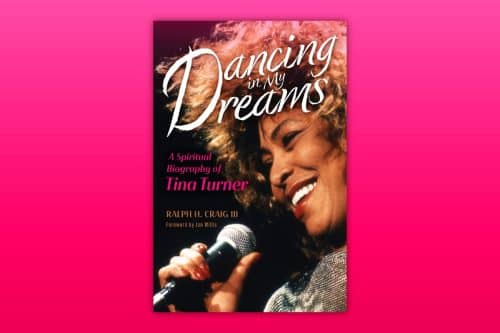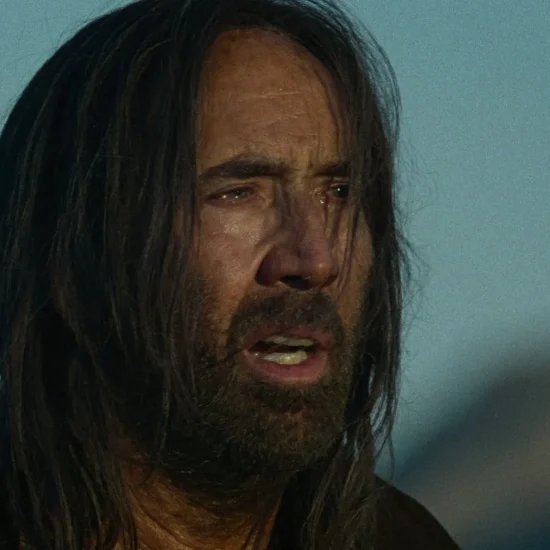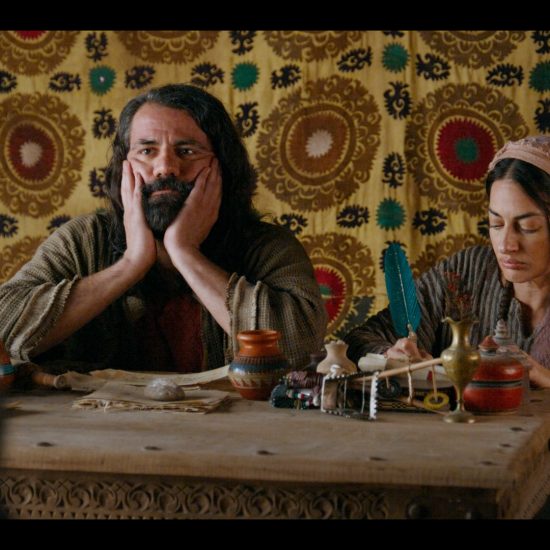

DANCING IN MY DREAMS: A Spiritual Biography of Tina Turner. (Library of Religious Biography). By Ralph H. Craig III. Foreword by Jan Willis. Grand Rapids, MI: Wm. B. Eerdmans Publishing Company, 2023. Xviii + 260 pages (minus the index).
One day before news came that the Queen of Rock and Roll, Tina Turner, had died I received an advanced reader’s copy of a new spiritual biography of the singer. I must admit that this was a bit eerie. Whether you were a fan of Turner’s or not, at least if you were of a certain age, you knew the name and at least a few of her songs, including her signature song— “Proud Mary.” What you might not have known, at least I did not know, were the diverse spiritual dimensions of her life. Nevertheless, it was these spiritual dimensions that enabled her to overcome tremendous odds throughout her life, including an abusive marriage to Ike Turner. That story has been told in this biography (due out November 7, 2023) authored by Ralph Craig III.

Robert D. Cornwall
Ralph Craig’s biography of Turner Dancing in My Dreams appears as part of the Eerdmans Library of Religious Biography, which means the focus of the biography will be the spiritual dimensions, something that not all biographers will choose to focus on. Since it is part of a collection of religious biographies published by a publisher known for publishing Christian books, you would expect it to focus on spirituality and religion. What we discover as we read the story of this amazing singer and performer who was known as much for her dancing as her singing is that she was deeply religious, though that spirituality was an intriguing mix that settled in on her conversion to Buddhism around the time she left Ike Turner.
The dancing aspect of Turner’s performances is captured in the title, though her singing voice was quite powerful. Even though I wasn’t a big fan, growing up, I knew her music (her music career began at about the same time as I was born). While I might not have collected her records, as I read this biography I was drawn into her story. As I write this review, Ralph Craig’s Dancing in My Dreams is not scheduled for publication until the late fall of 2023. So, if you don’t want to read any spoilers, you might want to stop reading!
Before we get to the story of Turner’s life, I would like to introduce the author of this biography. Ralph Craig III holds a Ph.D. in religious studies from Stanford University (May 2023). His dissertation focuses on medieval representations of Buddhist preachers across South Asian Buddhist literature. This is a reflection of his scholarly interest in Buddhism. In line with his biography of Turner, he is interested in the intersection of Buddhism and African American culture.
Now to the biography. This is the story of a woman born and raised in rural Tennessee, not far from Memphis. While we know her as Tina Turner, her birth name was Anna Mae Bullock. Her now famous moniker was given to her by her husband Ike even before their marriage as she joined his band as its lead singer. Early in life her parents divorced and left her in the care of her two grandmothers. The two grandmothers were very different in temperament and spirituality, and they contributed differently to her spiritual development. Her grandmother on her father’s side was a strict Baptist, but it was the Black Baptist church that her paternal grandmother introduced her to that provided a context for her to develop her powerful singing voice. As for her maternal grandmother, she introduced Turner to more non-traditional spiritual ways, including mysticism, Native American spiritual traditions and practices, and supernaturalism. While she was in and out of her parents’ homes, it was while living with her mother that Turner was introduced to Pentecostalism. All of these different religious communities and expressions reflected different forms of Southern religious culture, all of which helped form Bullock’s spiritual development.
It was during her high school years living in St. Louis, that Anna Mae Bullock met Ike Turner, who allowed her to occasionally sing with his band. This experience introduced her to the Blues and R&B. In time she became an integral part of the band. She would eventually become Ike’s wife, a marriage that was extremely abusive and controlling. It would take many years for Tina to extricate herself from Ike’s control, a journey that Craig lays out in significant detail. We also learn about the 1960s racial climate in which Ike and Tina moved, though neither of them took an active role in the Civil Rights Movement.
During these early years of her career (the 1960s), Turner began to draw on the mysticism of her maternal grandmother as a spiritual support and solace. This included turning to a variety of spiritual frameworks including astrology and psychics. To the end of her life, Turner consulted astrologers and psychics to help her plan her life. Eventually, however, she would discover Buddhism and by the mid-1970s converted to Soka Gakkai Nichiren Buddhism.
Turner’s turn to Soka Gakkai Nichiren Buddhism came at the same time she began to break free of Ike’s control. Friends and her son Ronnie first introduced Turner to Buddhism in the early 1970s. The form she embraced was Soka Gakkai Nichiren Buddhism, which Craig helpfully introduces us to. This form of Buddhism was founded in 1930 in Japan and by the 1970s had become a leading version. She received as part of her initiation into this form of Buddhism a Gohonzon (a mandalic scroll with a spiritual phrase embedded on it), which Turner chanted, gaining strength from her chanting. While Turner began to engage with Buddhism she didn’t give up her interest in astrology or consulting psychics. Her attraction to Buddhism was combined with her interest in various forms of metaphysical religion.
Turner’s move into Buddhism coincided with her break with Ike, which was quite difficult as Ike had from the beginning controlled almost every aspect of her life. Additionally, launching her own career was difficult since many venues and recording companies did not welcome Black women as solo artists. Thus, once again, it was her engagement with Buddhism that helped her manage this transition into a new life without Ike. Though there were many challenges involved in her break with Ike, eventually she was able to develop her own identity separate from Ike. She was fortunate, that other musicians including David Bowie, intervened and helped her launch a career that made her one of the best-known singers in the world. Interestingly, she first made her mark not in the United States but in Europe.
While this is a spiritual biography, thus privileging her spiritual journey, this is also a true biography so we gain insight into the entirety of Turner’s life and career. When she began her solo career, while performing in small clubs and Las Vegas hotels, she made it her goal to fill arenas. That would come. It wasn’t easy, but she persisted and attained her dream. It was her engagement with Buddhism, especially chanting, that helped her achieve her dreams, dreams that included overcoming both the racism and sexism present in the music industry. While she achieved her dream of becoming a successful solo artist who filled stadiums and arenas, she had one more dream left to be fulfilled. That dream involved becoming a Buddhist teacher.
As early as the mid-1980s, Tina began to dream of becoming a religious teacher. However, this did not take place until after she retired from her performing at the live concerts she had become known for. Before that occurred, Turner would limit the discussion of her beliefs to interviews. Then, in the early 2000s, as she left behind her public music career, she began to find opportunities to engage in spiritual teaching. As part of her engagement as a Buddhist teacher, she released albums and books that expressed her beliefs.
While we may know Tina Turner best for her music, as Ralph Craig notes, “At every major juncture of Turner’s life there was religion: she learned to dream in the cotton fields of Nutbush and found comfort in the natural, earthly spirituality of her maternal grandmother. This spirituality was itself rooted in a stream of Black southern religious culture that centered conjure, root work, dreams, visions, signs, and the wilderness experience” (p. 217). While these influences impacted her spiritually, her paternal grandmother’s introduction of Turner to the Black Baptist tradition helped her find her singing voice in the church choir. Then, her introduction to Buddhism helped Turner find her independent voice as a singer, person, and ultimately as a religious teacher.
I believe that readers of Dancing in My Dreams: A Spiritual Biography of Tina Turner will come to a new appreciation of a female rock star known for her dancing and singing. It is clear that there is much more to Tina Turner than many of us realized. Whether we share her religious beliefs and practices, as we read her life story, we will discover how her diverse spiritual experiences joined with her commitment to Buddhism to form and sustain her in life. As I noted at the beginning, I received the Advanced Reader’s copy the day before Tina Turner died. Craig might add that fact in the final edition, but even if that wasn’t possible, we have here a full life story. So, as Ralph Craig points out as he concludes Dancing in My Dreams: “Through telling her story, in often graphic detail, Tina Turner has taught countless people the world over how to triumph over their obstacles, how to change their own poison into medicine” (p. 220). For that reason, this is a welcome biography.
Note that Dancing in My Dreams will not be released until November 7, 2023. However, you can preorder it now.
This review originally appeared on BobCornwall.com.
Robert D. Cornwall is an ordained minister in the Christian Church (Disciples of Christ). Now retired from his ministry at Central Woodward Christian Church (Disciples of Christ) of Troy, Michigan, he serves as Minister-at-Large in Troy. He holds a Ph.D. in Historical Theology from Fuller Theological Seminary and is the author of numerous books including his latest “Second Thoughts about the Second Coming: Understanding the End Times, Our Future, and Christian Hope” coauthored with Ronald J. Allen. His blog Ponderings on a Faith Journey can be found at www.bobcornwall.com.






